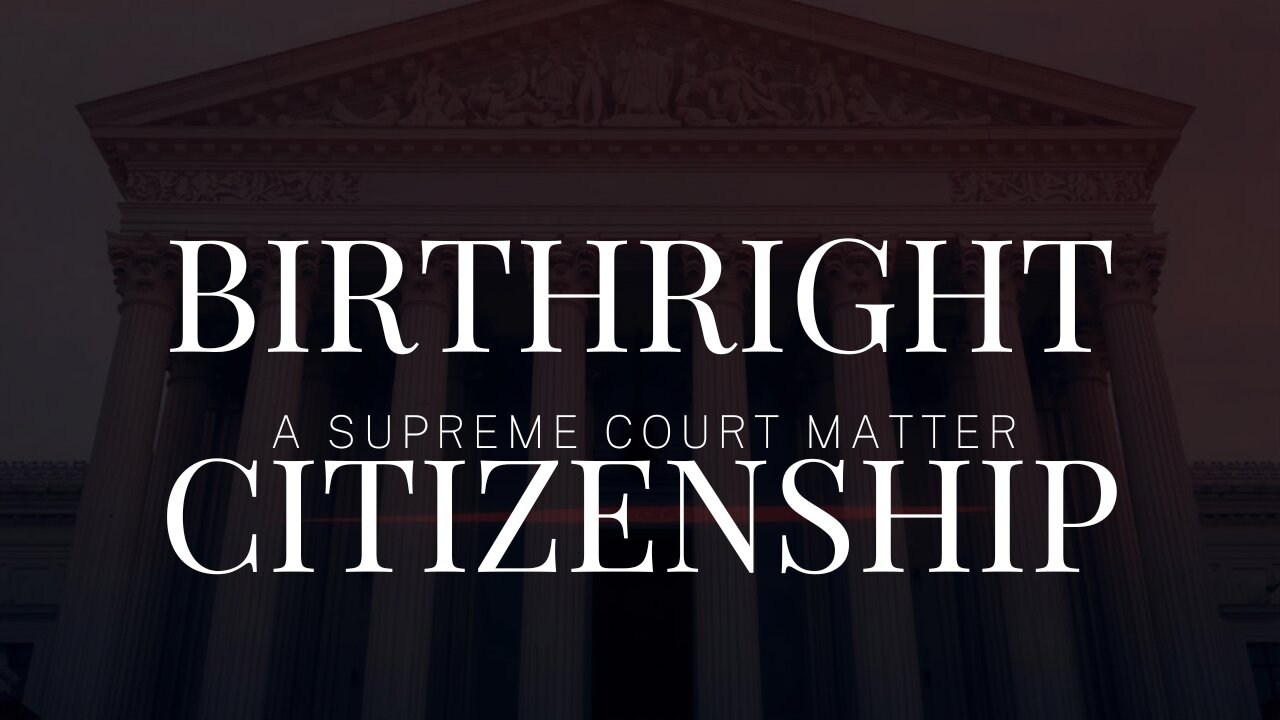The Fourth Arab-Israeli War has, as CNAV has noted before, brought out the worst in many groups of people. It has divided coalitions on the left and the right. To be specific, antisemitism has reared up as it hasn’t since Kristallnacht. America has seen that especially on university campuses – but it also has appeared off campus. Underpinning all antisemitic pronouncements, is a conspiracy theory of some kind. Lately a new theory found its way in to the comment space of CNAV’s sister channel, Declarations of Truth. CNAV will keep the curtain of charity drawn (with apologies to Samuel L. “Mark Twain” Clemens) and withhold the commenter’s name and Rumble handle. But the comments remain. CNAV understands what the Censorship Industrial Complex does not: that Internet archive services, that include more than just The Wayback Machine, ensure that comments remain forever. Therefore CNAV will answer them – directly.
Antisemitism in and by the Roman Empire
CNAV has covered the history of the Middle East before. The relevant part of that history begins with the Birth, Ministry, Passion and Resurrection of Jesus Christ. At that time, the Jews lived under Roman occupation, which they perceived, correctly, as a brutal form of antisemitism. They anticipated their Messiah, but wanted a political leader. Jesus Christ disappointed them.
My Kingdom is not of this world.
John 18:36, Authorised or “King James” Version
His Passion and Resurrection occurred shortly thereafter. The Jews have assiduously denied that ever since. In fact some Gospel manuscripts suggested that the High Priest bribed Roman guards to say they had slept on watch so that Jesus’ disciples could steal His body out of the Garden Tomb. (That’s probably apocryphal; the penalty for sleeping on watch in the Roman Army was death.)
In 70 A.D., General Titus Flavius, son of Emperor Vespasian, led an army to quell a Jewish revolt. He famously destroyed Herod’s Temple in Jerusalem. He also besieged the last of the Zealots, instigators of the revolt, who had encamped atop Mount Masada. All of them died, except Flavius Josephus and one other man whom Josephus persuaded to go on living with him.
Simon Bar Khokhva’s Revolt, and the Diaspora
But in 135 A.D., Simon Bar Khokhva, pretending to be that political Messiah the Jews wanted, led another revolt. Emperor Hadrian’s forces brutally quelled that – then scatted the Jews throughout the Roman Empire. To put that into perspective, the Roman Empire had achieved its greatest territorial extent by then, under Hadrian’s predecessor Trajan. Furthermore, many Jews fled to lands beyond the Roman world – or perhaps the Romans sentenced them to exile at a distance from the city of Rome beyond Imperial boundaries. This was the Diaspora, which saw the settlement of Jews as far away as India and Medina in Arabia. Hadrian then renamed Judea as Palaestina, which is Latin for Philistia, or Land of the Illegal Immigrants. Jerusalem then took the name Aelia Capitolina.
Centuries later, a group of Jews calling themselves the Interpreters (Masoretes) crafted the Masoretic Text, which dates back to the ninth, tenth, and eleventh centuries. Key to understanding the relevance is that the Masoretes sought to adjust the chronologies of the most ancient Patriarchs. Their object: to make the dates come out so that Simon bar Khokhva would be recognizable as the Messiah.
From Masoretes to Muslims
The Masoretic Text remains the preferred Jewish translation of their Law, Prophets and Writings – which Christians call the Old Testament. It also formed the primary basis of Christian translations of that Old Testament, although Christian translators also used the Septuagint, or Interpretation According to the Seventy. This last is a Greek version that Ptolemy Philadelphus commissioned from seventy Jewish scribes for his Great Library of Alexandria. This is the version that the Apostles and the Evangelists had available to them, and from which they quoted.
As everyone knows, the Roman Empire split into Greek-speaking (Eastern) and Latin-speaking (Western) halves, beginning with Constantine. The Western half fell in 454 A.D., and eventually the various kingdoms of Western Europe arose from its ashes. The Eastern half continued as the Byzantine Empire. That Empire would eventually fall to the armies of Islam – which Muhammad invented to rally his fellow Arabs to fight against the Byzantines, whom he detested. Muhammad also sought to recruit the Jews of Medina, by carefully modeling his rules for daily living after Jewish Kosher rules. But the Jews rejected him even more thoroughly than they did the Christians. Islam has been the bitterest – and deadliest – enemy of Judaism ever since, with the possible exception of German National Socialism.
Muslim conquest, Crusaders, Mameluks, and Ottomans
Muhammad and his successor generals swept the Byzantines out of the Arabian Peninsula. Then one successor, Abd al-Malik, conquered Jerusalem. He built the Dome of the Rock on the site of Herod’s Temple. That Dome was his equivalent of the Tel-Bethel and Tel-Dan Golden Calves of Jeroboam I, Solomon’s former Royal Chief Architect who rebelled and founded a rival Kingdom (the Northern).
When Abd al-Malik’s successors desecrated the Church of the Holy Sepulchre, Pope Urban IX called for the reclamation of Jerusalem. The Crusades were the result. Four such wars took place, beginning in the eleventh century. Then in the 13th century came the Mamelukes, from Muslim Egypt, who expelled the last Crusader Kingdoms from the region. Several Arab-speaking Muslims settled in the land – but so did many Jews from Spain, beginning late in the fourteenth century.
In the fifteenth century, Ferdinand of Aragon and Isabella of Castile made a treaty, sealing it with their marriage. Their combined armies drove the Moors out of Spain in 1492 (the year of the Columbus expedition). In 1517 the Ottoman Empire defeated the Mamelukes – and the Sultan invited more Jews to settle in the land. The Sultan did this, probably to spite the Spanish, who at the time were running The Inquisition. The present population of the Gaza Strip descend largely from the Mamelukes, with perhaps some Ottoman Turkish blood mixed in.
Worse example of antisemitism – the Holocaust
Such is the true history of the Middle East, up until the beginnings of Zionism, the purchase of the present lands of Israel from Turkish absentee landlords, the “renovation” of Hebrew as an everyday language, and eventually Lawrence of Arabia’s War, the British and French Mandatories of Palestine and Lebanon, and the Israeli War for Independence in 1948-9. CNAV can attest to that history, for in 2011 your editor traveled to Israel – and took photographs. The ruins of Crusader and Mameluke fortresses, along with Roman-era ruins and others dating further back in time, are undeniably authentic. No Jewish Potemkin built these fortresses for the benefit of American and other Western tourists. Furthermore, Jews protect the antiquities they discover. Muslims destroy antiquities – or, as Abd al-Malik did, cynically build on top of them.
At this time, the inclusion of insights from the Holocaust would be instructive. Most of the killings one associates with that event happened in Germany proper and Poland. Historian Jason Lantzer recently expounded on the orders and experience of General of the Army Dwight D. Eisenhower, Supreme Commander of the Allied Expeditionary Forces during the Second World War. “Ike,” almost alone among American generals, did not see Jews as inherently anti-American. Kristallnacht, when it happened, appalled him. So he received the assignment to command Allied troops in Europe with relish.
Ike discovers what the Holocaust was all about
In April 1945, “Ike” got his first glimpse of the Konzentrationlagern system. He visited Ohrdruf, a sub-camp of K.L. Buchenwald. This authenticated excerpt from a letter by him to General George C. Marshall says it all:
On a recent tour of the forward areas in First and Third Armies, I stopped momentarily at the salt mines to take a look at the German treasure. There is a lot of it. But the most interesting – although horrible – sight that I encountered during the trip was a visit to a German internment camp near Gotha. The things I saw beggar description. While I was touring the camp I encountered three men who had been inmates and by one ruse or another had made their escape. I interviewed them through an interpreter. The visual evidence and the verbal testimony of starvation, cruelty and bestiality were so overpowering as to leave me a bit sick. In one room, where they were piled up twenty or thirty naked men, killed by starvation, George Patton would not even enter. He said he would get sick if he did so. I made the visit deliberately, in order to be in position to give first-hand evidence of these things if ever, in the future, there develops a tendency to charge these allegations merely to “propaganda.”
One can read the letter at the Eisenhower Presidential Library. As further authentication, the letter mentions Ike’s personality clashes with Lt. Gen. George S. Patton – and his monumental disgust over the unfavorable coverage of Patton in the newspapers, coverage that took a negative tone Ike found impossible to justify.
That was only his first visit, and it cut him to the quick. His visits to other camps would turn out to shake his equanimity even further. So he gave orders to:
Document everything found in the camps, and create a photographic and cinematographic record.
Care for – and interview – all survivors.
Have every soldier in the Allied Expeditionary Forces visit the camps as they moved forward.
Have local, mainly German, civilians assist directly in burying the dead and caring for survivors.
Arrange for British Parliamentary and American Congressional junkets, with press (including ranking editors) in attendance, to the camps.
His orders might not include the apocryphal command to “get everything down … [because someday] some [blackguard] will … say this never happened.” The problem is: the blackguards are getting up and saying the Holocaust never happened. The comments at issue in the Declarations of Truth comment space are a booby-prize example.
Antisemitism and conspiracy theory
These comments give a radically different version of Jewish history, at considerable variance with historical fact. According to this theory, the Jews never left Judea/Palestine. With the coming of General Abd al-Malik, they converted to Islam – if they did not die. So from whom do the Jews of Israel descend? According to this particular commenter, they come largely from Russia and Poland. This is a slightly different, and less detailed, version of the Khazar Theory – that the present Jews are all that’s left of the Khazars who once ruled what is now Ukraine.
And what about the Holocaust, and Eisenhower’s attestation of it? Here is one quote that gives a clue to the mendacity of the comments:
You cannot believe anything Eisenhower said, he was one of the lügende Juden.
That German phrase admittedly looks like “Leader’s Youth.” But it translates as “Lying Jews.” That phrase in turn goes back to Martin Luther – who sullied his reputation, in the latter stages of his career, with his overt antisemitism. In fact, an engine search on the phrase produces links to Martin Luther’s unfortunate treatise. It’s name: Von den Juden und ihren Lügen – or, On the Jews and their Lies.
Absolutely no reliable historical record asserts that Dwight D. Eisenhower was Jewish. He and his family were Gentiles, and he himself was a Christian.
Conclusion
So now you see yet another conspiracy theory of the type that antisemitism absolutely requires. The essence of antisemitism is a belief that the Jews have established a shadow government that rules the West with an iron hand in velvet gloves. Add to it the theory that the Jews of today have nothing in common with the Jews of Roman Judea. Of course that theory leaves a great deal unexplained – chiefly, how could Russian, Polish, or Khazar people gain such a detailed knowledge of Jews and Judaism that they would seek to convert to it, or pretend to convert to it, to further a goal of establishing a shadow government over all the West. And how the Holocaust could have happened – but antisemites repair that deficiency by saying it didn’t happen. Exactly as “Ike” predicted – though not, perhaps, that anyone would seek to slander him in this connection.
That commenter knows who he is. CNAV offers this as a refutation, and a reminder to be better researchers of history than he. Or any other antisemitic conspiracy theorist or hypothesizer.
In closing, this has been a painful exercise for CNAV. An Army Air Forces veteran once told your editor personally of having overflown one of those camps. Your editor has no direct experience with Holocaust denial. But, just as truth is a complete defense against a charge of libel or slander, truth is also a complete antidote to the willful denial of unpleasant, but nevertheless established, historical fact.
Link to:
The article:
https://cnav.news/2024/01/27/editorial/talk/antisemitism-required-conspiracy-theory/
Video:

Declarations of Truth Rumble channel:
Ike’s letter to General Marshall:
Declarations of Truth X feed:
Declarations of Truth Locals Community:
https://declarationsoftruth.locals.com/
Conservative News and Views:
Clixnet Media























